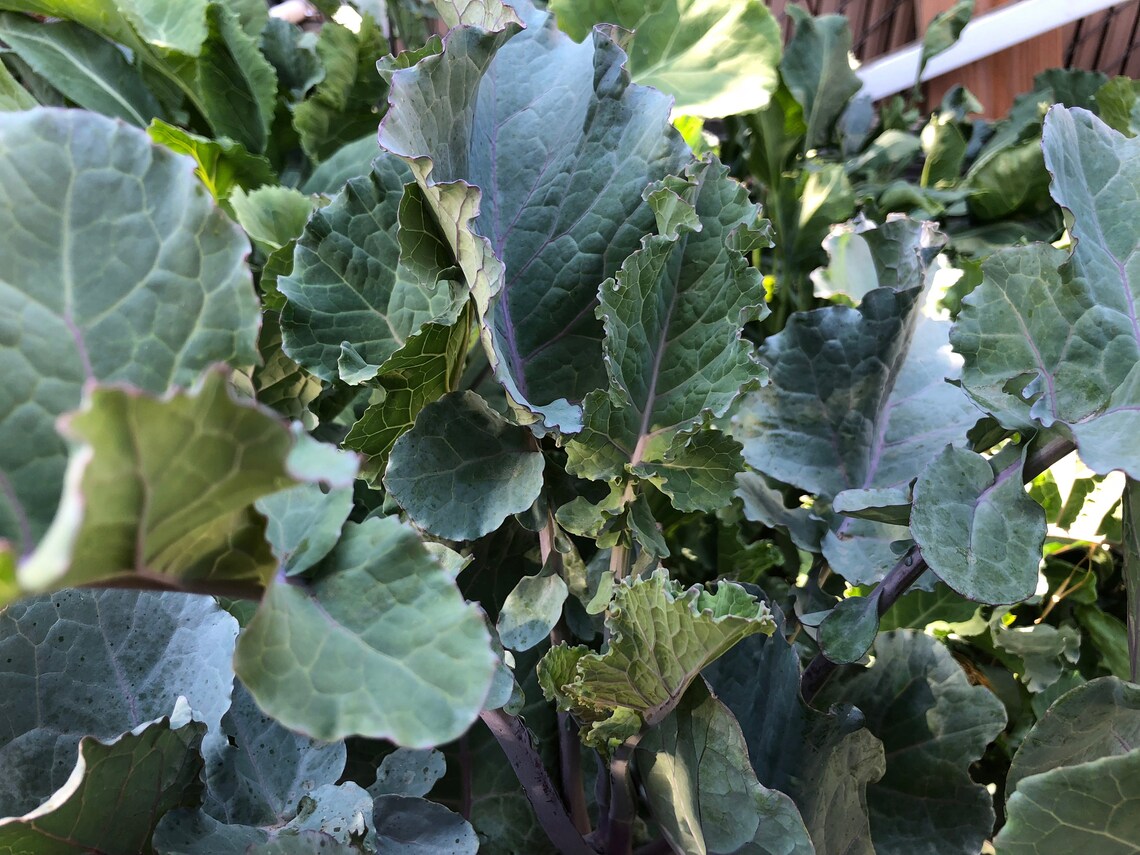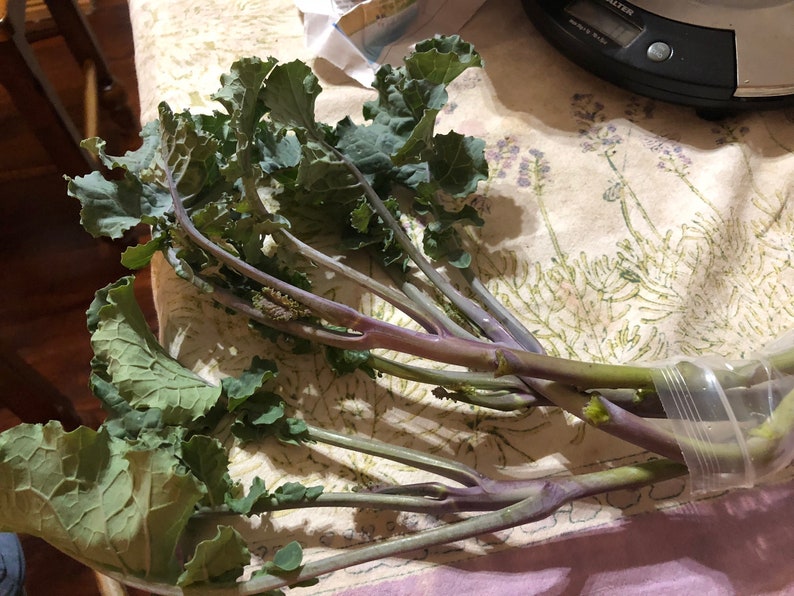

We expect plants to grow for many years, just like the other perennial kales and, as we have already discovered, like them it can be easily propagated by taking cuttings.

A mixture of this and variegated Daubenton’s at the back of a border would make a beautiful sight.Īs yet, we can’t say from experience how winter-hardy it is, but reports suggest it is hardy to at least -5C. It is also a very elegant plant with attractive purple leaves and stems.

Tree collards probably originated in the UK - they are believed to have been introduced to California during the latter. Its structure is more open than other kales, making it particularly good for under-planting with alliums and ground cover plants. This perennial kale variety has been popular for many years among permaculture and forest garden folks in north America, but it is just beginning to show up in the UK. It grows like a lanky Taunton Deane, although it is less robust and needs some support if exposed to wind when it gets taller. We don’t have a lot of experience with purple tree collards yet, but we have been treating it much as the other perennial kales and it has responded well. You can find seeds and plants of 'Jersey kale', however, although it probably shares a common ancestor with perennial tree collards, it does not seem to be truly perennial. Tree collards probably originated in the UK - they are believed to have been introduced to California during the latter half of the eighteenth century, from the island of Jersey in the English Channel where they were grown to feed cattle. After the plant is finished flowering, cut off the flower stalks and it will increase its leaf production again and give you leaves all summer, fall, and winter.This perennial kale variety has been popular for many years among permaculture and forest garden folks in north America, but it is just beginning to show up in the UK. While it's flowering, you'll notice that it doesn't make as many leaves. The immature flower buds can be harvested and eaten just like broccoli (it's the same family). Your Merritt Collard will pop up a flower stalk in the spring. We suggest harvesting 1/3 or less of the leaves at a time so the plant can continue to gather sun and photosynthesize.
BUY PURPLE TREE COLLARDS HOW TO
Here are some pruning tips below: How to Harvest & Use It If you live in a cooler growing zone, take a branch cutting in the late Fall and pop into a pot and bring indoors for the winter.
BUY PURPLE TREE COLLARDS PRO
It will seem to grow slowly for the first couple months as the roots settle in, and then it will boom with growth! PRO TIP: The key for this wonderful, branching perennial green is to harvest often! It will allow for optimal air flow, which will keep your collards happy and healthy. Trim off any flowers for the first few months. It's best not to let your plant flower as it's getting settled into its new home. Once you plant into moist soil, it will spring to life for you and immediately start growing leaves. Plant out or pot up once seedling has a strong root structure.įROM ROOTED PLANT: We trim all of the leaves except for the top leaf for shipping to prevent dehydration. Ensure steady moisture and a good light source to reduce stretching, which creates weak stalks. We're here for you!įROM SEEDS: Start indoor in plug trays 4-6 weeks before last frost date. If you're colder than this, keep your potted cutting on a window sill until Spring. We root outside year-round in zone 9 and above. That's it! They root super easily and you should see new leaves start popping in 4-8 weeks. Water occasionally to keep the soil moist. Simply bury the cutting halfway in the soil. PERENNIAL OUTDOORS IN USDA ZONES 8-10, CUTTINGS CAN BE OVER-WINTERED INDOORS EVERYWHERE ELSE ( Not sure? Find your growing zone here)įROM CUTTINGS: We like to root cuttings in 4" or 1 gallon pots. Here's how to grow Merritt Tree Collards: SUN We use them in stir fries, soups, and even in our green juice. They are wonderful chopped up into a stir fry or lightly steamed and used as a wrap.Ģ) PROLIFIC- This perennial collard has a wonderful branching habit that will give you many heads of these amazing collards, all from a central trunk.ģ) GREAT TASTE - The Merritt collard has a nice light taste and even the largest leaves are tasty. Here are some of the reasons why we love the Merritt Tree Collard.ġ) GIANT LEAVES - The Merritt collard has giant, green leaves that continue to crank out all year. We love this plant! (Brassica oleracea) Why We Love It It produces giant leaves with a true collard taste that is delicious in recipes. You can't go wrong with the perennial Merritt collard! This awesome specimen of a perennial green was originally propagated by the great folks at Project Tree Collard from a perennial brassica growing at Merritt College in Oakland.


 0 kommentar(er)
0 kommentar(er)
